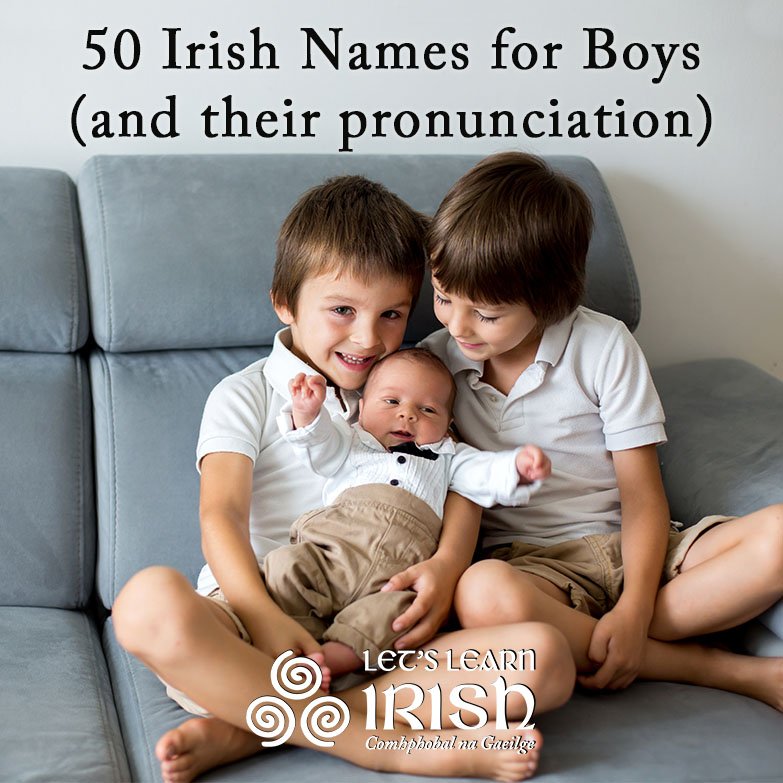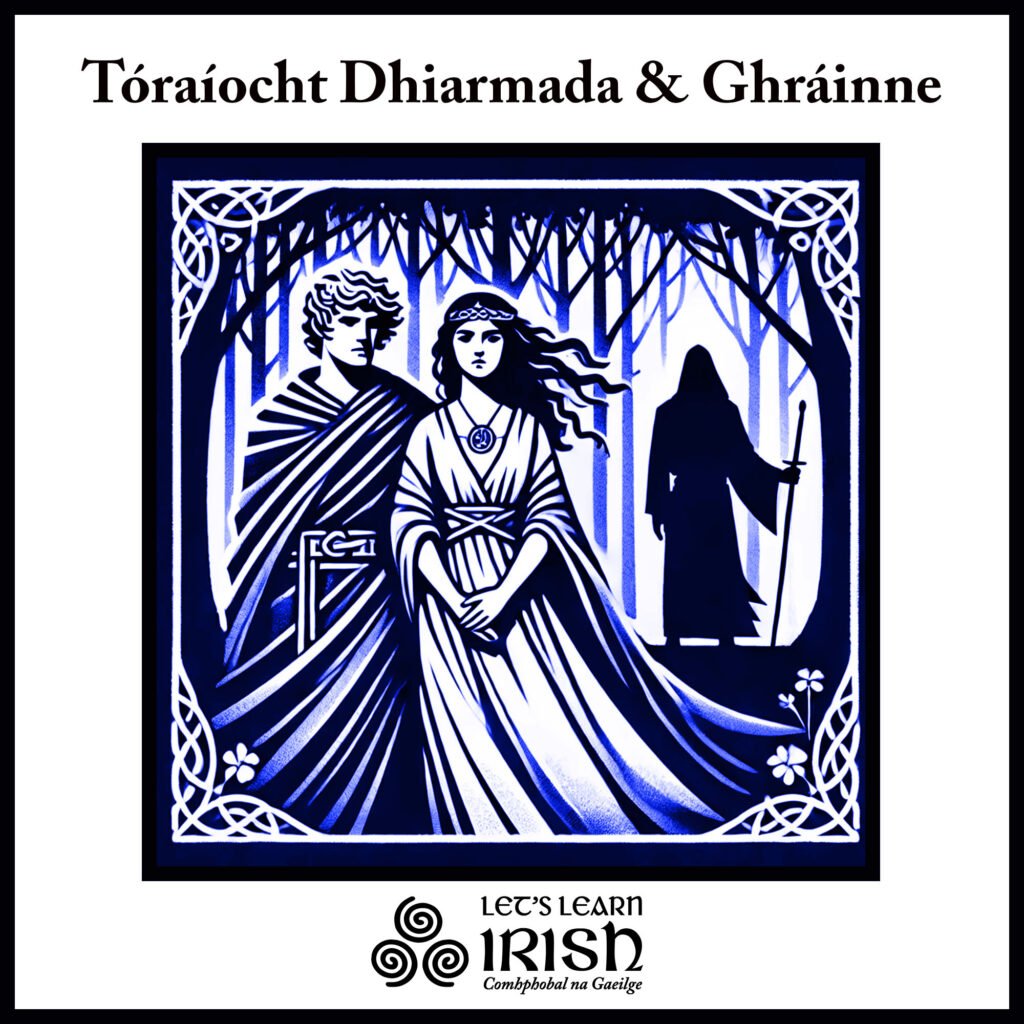What is the Fenian Cycle (an Fhiannaíocht)?

Anyone attending our online Irish classes will likely have noticed that Irish folklore is often a great source for educational material. One such source is An Fhiannaíocht, also referred to as The Fenian Cycle, a collection of ancient Irish texts revolving around the figure Fionn mac Cumhaill and his group of warriors called the Fianna. The Fenian Cycle is chronologically the third of four bodies of work based on Irish mythology, being after the Ulster Cycle and before the Kings’ Cycle. The Fenian Cycle sometimes draws comparison with the Ulster Cycle, as they both have warrior heroes at their center.
Fionn (also spelled Finn) was born to a druid mother after his father Cumhall, leader of the Fianna, was slain in battle by Goll mac Morna. The Fenian Cycle follows Fionn’s life, from conception to death in the Battle of Gabhra, and details his exploits in between. This body of texts is sometimes called the Ossianic Cycle, because Fionn’s son, Oisín, is the narrator.
When and Where is the Fenian Cycle Set?

The stories of the Fenian Cycle are set in the 3rd century CE, during the reign of the high king Cormac mac Airt, who ruled over all of Ireland. This was a time when the nomadic Fianna were flourishing.
While the Ulster Cycle is largely restricted to the tíreolaíocht (geography) of what is now Eastern Ulster and Northern Leinster, the Fenian Cycle encompasses modern day Munster, Leinster and Scotland. For example, Fionn was reared in the woods of Sliabh Bloom in County Laois (in the province of Leinster), but hunted in the Ballachgowan Forest in Munster. The cycle is also a part of the Scots Gaelic literary tradition, as Fionn mac Cumhaill allegedly defended both Ireland and Scotland against invaders.
In What Style was the Fenian Cycle Written?
While the majority of the Ulster Cycle is delivered in prose, with occasional poems intermixed into the text, the stories of the Fenian Cycle are mostly in verse. Rather than being in the form of an epic, it has been suggested that they were written closer to the tradition of romance literature. This fits the content of the cycle, as Fianna members, in addition to being good hunters and warriors, were also expected to be fluent in filíocht (poetry).
Who was Fionn mac Cumhaill?
While Cú Chulainn was the star warrior in the Ulster Cycle, chronicling his life and then his deeds in the Táin Bó Cúailnge (The Cattle Raid of Cooley), the stories in the cycle included plenty of attention towards other characters. In comparison, while the Fenian Cycle includes the plights of other figures as well, such as Diarmuid, Caílte, Oisín, and Oisín’s son, Oscar, none of them are given the scope of the titular protagonist.

Fionn mac Cumhaill was born with the name Deimne and raised in the woods by two foster mothers, Bodhmall and her companion Liath Luachra. Liath Luachra was a great warrior herself and taught him to fight. As a boy, Fionn was cooking An Bradán Feasa (the Salmon of Knowledge) for his mentor Finnegas, but accidentally burnt his thumb. He instinctively put his thumb into his mouth to ease the pain, and instantly acquired all its knowledge. Around this time he also acquired the nickname Fionn, meaning “fair”, due to his bright blonde hair.
Fionn earned his reputation through various feats of strength and cunning. For example, every Samhain (now known as Hallowe’en) a member of the Aos sí, the supernatural Celtic race, tormented and paralyzed all the warriors in the Fianna. Fionn slayed the being with an enchanted spear, and as his reward, was made leader of the Fianna. Later, he outsmarted a giant that came across the ocean to fight him. He dressed himself up as a babaí (baby), making the giant think that if the toddlers of the people in Ireland were this big, he didn’t want to challenge the adults.

Despite his bravery, Finn mac Cumhaill was not a character without faults. In Tóraíocht Dhiarmada agus Ghráinne (The Pursuit of Diarmuid and Gráinne), perhaps one of the most prominent tales from the cycle, an aging Fionn is promised to be married to the beautiful Gráinne. After she elopes with her lover Diarmuid, Fionn chases them across Ireland and Scotland. After a “negotiated peace,” Fionn invites Diarmuid on a bear hunt, where the latter is mortally injured. Fionn has the ability to heal Diarmuid, but refuses to do it, allowing him to die.
Like most warriors, Fionn eventually meets his end in battle. Cairbre Lifechair, the son of the recently deceased high king Cormac mac Airt, does not like paying the taxes that the Fianna demand for protection. What follows is the Battle of Gabhra, during which some texts say that Fionn was slain, while others say he died earlier in the battle of the Ford of Brea.
The Fionn Cycle Folklore Database
Initiated by Harvard University, the Fionn Cycle Folklore Database collects and organizes the vast body of songs and texts from the Fenian Cycle. They have collated not only the sources found in the Irish language, but also in Scottish Gaelic, Manx and English. The reach of their database includes over 3500 orally collected songs or texts, from the original manuscripts written centuries ago, as well as those that have arisen since then. The database unites archival collections across borders and languages, providing a list of all known versions of each song or story. The project has been a boon for Fenian Cycle scholarship.

The Fenian Cycle contains some of the most important tales in Irish mythology. Featuring the warrior Fionn mac Cumhaill and a few of his descendants, it tells of his rise in the mighty Fianna clan and the exploits he accomplished afterwards. Written in a style that privileges verse over prose, it examples a fabled Irish past in which men had to both swing a sword and compose poetry, and the supernatural was still a part of life. It is not surprising that various tales of the Fenian Cycle remain embedded in contemporary Irish culture.
Bígí páirteach!
Join the online Irish community at LetsLearnIrish.com.
Follow on social media @LetsLearnIrish.





